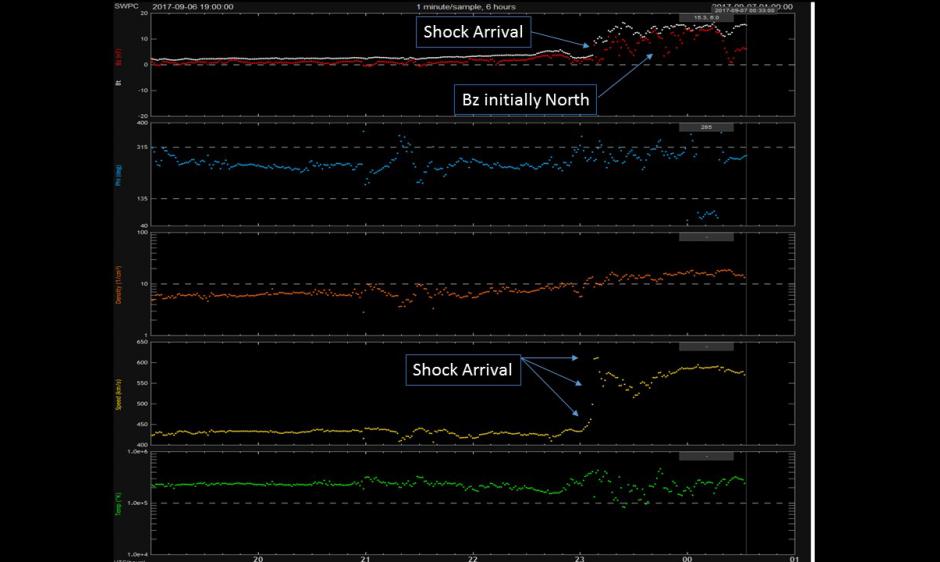
The coronal mass ejection (CME) from 4 September, 2017 arrived at the DSCOVR spacecraft on 6 September at 2308 UTC (1908 ET). A sudden impulse was observed at several of Earth's magnetometers on 6 September at 2348 UTC (1948 ET) due to effects from the shock arrival at Earth. While solar wind speed initially reached speeds of around 600 km/s and total interplanetary magnetic field strength (IMF) increased to around 14 nT, the Bz component was directed northward in the early stages of the event - an unfavorable orientation for escalating geomagnetic responses. However, the potential for geomagnetic storming still exists as the CME continues passing over Earth. Keep checking our SWPC website for the latest alerts, warnings and updates.